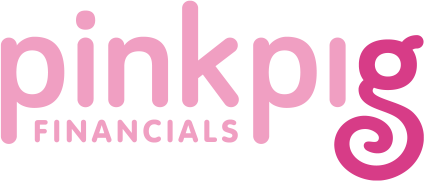There are many reasons why you would need a budget for your business, and it all depends on the questions you have and what you’re trying to achieve! I’m going to cover 3 of the most common reasons in this blog, but basically, a budget is a financial roadmap helping you get to where you want to be—it’s a tool to help you achieve your goals.
Reason 1 – To get some sales targets
So you may know what you want from your business, but you don’t know how to achieve it. So the first step is to do what we call a bottom-up budget.
The first step would be to confirm what you need to take out of the business each month. If you haven’t already created a personal budget, this is the first step to ensure that you’ve included everything — all those little bits that slip out of your account that you forget about! (Spoiler alert: This isn’t to stop you from doing the things, but to make sure you’re aware of them and include them in what you want to take out of the business each month.)
To your personal takings, you then add on your overheads to get your gross profit figure. So include all the things from the admin expenses in your P&L, and this may fluctuate if you have one-off, annual, or quarterly costs as well as normal monthly expenses, so make sure you account for it all.
Then, from your previous month’s figures, you can work out your gross profit margin—the percentage of profit before your overheads—so you can apply this to get a sales target.
So, now that you know what you want to achieve with your sales, you can break it down into numbers of sales or customers, depending on the nature of your business. For example, if you sell a product and your average sales price is £100 and your target for the month is £10,000, you need to sell an average of 100 products.
If you’re a service-based business or membership, and your monthly fees are, say, £200 per month, then for that sales target of £10,000 you need 50 customers or members.
You now have your sales targets, so you can set some clear goals on how to achieve those targets.
Reason 2 – To see if you can afford to do something
Say you want to take on a new team member or open a new office, but you’re not sure if you can afford it or not. Or you need to understand how energy increases will affect you. This is where a budget will help (and, to be fair, a cash flow forecast too!).
So what you’d do here is either create a bottom-up or a top-down budget, depending on your circumstances.
If you already have a healthy profit that more than covers what you need to take home, then it may be a case of a top-down one, to see how adding in the new expense will affect your profit.
So you’d take your existing figures—sales and expenses—and then add in the additional expense to see the effect on your profit. Is that still enough to give you what you want out of your business?
Or you can do the bottom-up budget as described above, but add in the extra expense, and then you get your new sales target.
Either way will tell you what you need to know, so it just depends on your circumstances as to which will work better for you.
And I’d also recommend you plug the figures into a cash flow forecast to make sure you also have the cash you need to pay the extra expenses, as there are always going to be one-off costs that you haven’t planned for. If you’re looking for new premises, you may need to pay a month or quarter’s rent upfront, so you need to be 100% sure you can cover these before you commit.
Reason 3 – Growth planning
You want to grow your business, but you’re not sure where to start! As I mentioned above, a budget is a roadmap, so it can help you work out the journey.
Now this one is a bit more complicated; there is a lot more to it. You’ll probably want to do this in conjunction with a cash flow forecast too, to make sure you account for everything. A budget focuses on profit and loss, so it won’t include capital items like equipment, rental deposits, and so on. But you do need to plan for these, which is why a cash flow forecast is also important. But start with the budget first.
So you need to understand where you are today, so you have your current P&L report for this (and there is no need to be embarrassed or stress that it’s not “good enough”; we need to know exactly where you are so we know where you need to go).
Then I’d start with a bottom-up budget, as we’ve spoken about above, working out the end goal and starting with what you want out of your business.
Then take today’s expenses and think about what else you’ll need: what people you need (and therefore people costs; don’t forget equipment they’ll need, software subscriptions, etc.); additional or bigger premises; extra software or materials for additional services or products; everything!!!!
Then follow the steps above to get your new sales target.
So now you know where you are and where you want to be, and you need to look at how long it will take you to get there. You’re not going to go from £50k in sales to £500k overnight, so how long will it take you to build up? And be realistic here; it’s great to be optimistic, but you need to stay grounded or you’ll just demotivate yourself.
You can then break it down into targets for the next few years or months to build up to that target. You know how much you’ve grown in the last year or so (depending on how long you’ve been in business), so you can apply the growth pattern to see how long it will take you if you continue to grow at the same rate.
You’ll then have your annual or monthly milestones to work towards and can break that down into the number of sales, customers, or members you need to hit those targets.
Being accountable
There’s no point in setting a budget and forgetting about it; you need to measure your performance each month against your budget to make sure you’re on track, hitting those targets, and reviewing what is and isn’t working.
Budget Manager is a useful tool in Xero that allows you to input your budget and then run reports to compare your actual versus budget figures. This is a great way to keep track of where you are; you can look at individual months and years to date.
And if you’re a data lover, you can take this further into full management accounts, where you can analyse things in more detail to really understand what is going on in your business. We’d set some KPIs (Key Performance Indicators), based on your budget and what you’re trying to achieve, and then drill down into the nitty gritty to get a better understanding.
A budget is not set in stone
It’s also worth noting that a budget is just a prediction (the same with a cashflow forecast); they are what you want to happen or think will happen, and therefore they can never be 100% accurate (even if you’re continuing as you are, costs change, and your prices should too; but that’s for another day; check out this blog on raising your prices).
You can adjust your budget as things change; that’s totally ok to do too. It should be a working document that helps you to plan and that motivates you to keep going and striving for those targets.
You’ve definitely not failed if you don’t hit the targets you set; you’re on your way to them. So it’s probably also worth saying that it’s great to have targets, but they need to be realistic. If you do your bottom-up budget and the sales target scares you silly, then it’s not the right target, and maybe you need to adjust your costs or what you take out of the business and work towards building up to the figures. Be flexible and open to change as you go.)
Don’t stress – we’ve got you covered!
Now that I’ve rattled through everything in a rather simplistic way, in real life we’ll need to take into account how taxes are affected and budget for that too, but I hope it’s given you an idea of what is possible.
And don’t stress about actually doing these things—we know you didn’t set up your business to do budgets—that’s what we’re here for, to help you get the answers you need. We can work with you on a budget, cash flow, or accountability; we’ve got you covered.
If you’d like to have a chat to see what is best for you and your circumstances, then head over to our Get Started page, complete the quick questionnaire, and we’ll get a call in the diary.
Check out Pink Pig Financials on YouTube for more tax tips and advice.

